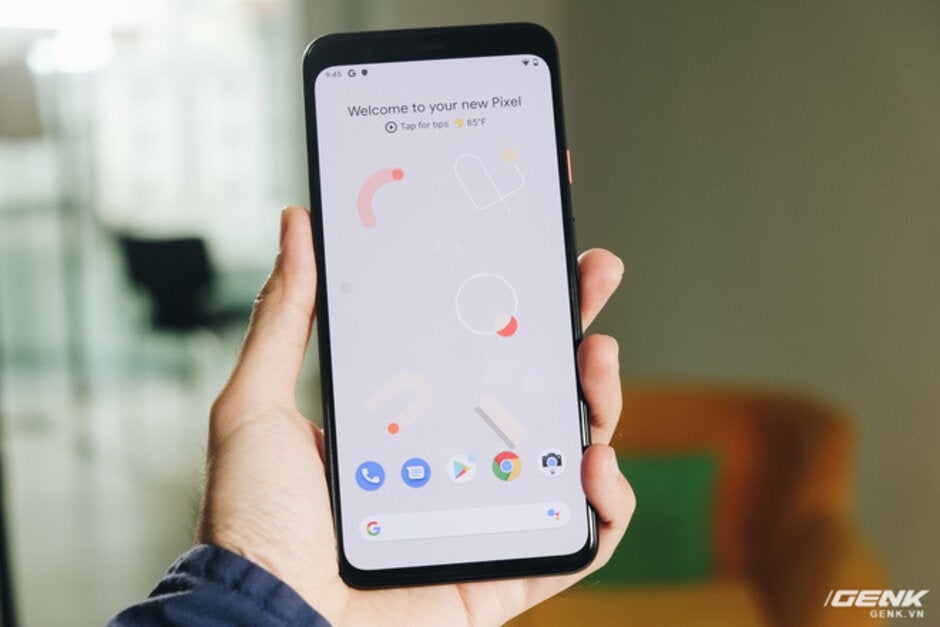Google Pixel 4 series might not be all that it could be according to benchmark test

It is something of a shocker, but a look at a Geekbench benchmark test for the Google Pixel 4 XL reveals that the phone will be using Universal Flash Storage (UFS) 2.1. The issue is that UFS 3.0 is available and the OnePlus 7 Pro was the first to have it. What's the big deal you ask? UFS 3.0 opens apps and games faster, boots up quicker and can more easily transfer large video and image files.
According to the Geekbench results, which were disseminated in a tweet by tech aficionado Zyad Atef, the speeds at which the Pixel 4 XL was able to read and write from the UFS chip (655.57Mbps and 254.48Mbps respectively) fall in line with the UFS 2.1 speeds as opposed to the newer version. For example, sequential read and write speeds with UFS 3.0 can reach 2100Mbps and 410Mbps, respectively.
Two firsts for the Pixel line this year: 6GB of memory and multiple rear cameras
With Google positioning the Pixel 4 line as perhaps the most feature-packed Android phone for the next year, using UFS 2.1 instead of 3.0 produces a bad look for the company. Consider that the new models are supposed to have a new secure face unlock that uses 3D mapping, feature screens with a buttery smooth 90Hz refresh rate, and allow the units to be controlled with hand gestures using Motion Sense (thanks to the Soli radar-based chips). If Google is serious about taking the Pixel line to the next tier, why not make it run as fast as possible by including UFS 3.0? You could make the assumption that this has something to do with keeping the price down, but the OnePlus 7 Pro, which does have UFS 3.0, isn't exactly a phone that will break your budget.

The Google Pixel 4 XL
The Pixel 4 and Pixel 4 XL will come with 6GB of memory for the first time in the history of the line, a 50% hike from the 4GB previously found on the phones. And Google is adding a second 16MP telephoto camera to both new phones this year, able to combine Google's Super Res Zoom with optical zoom to produce high-quality photos with up to 8x zoom. The larger Pixel 4 XL will add a third sensor which could be a Time of Flight (ToF) infrared depth sensor or a spectral sensor. The latter can capture images of things that are not usually seen by the human eye such as x-rays, ultraviolet rays, and infrared rays.

Benchmark test reveals that the Pixel 4 series will use UFS 2.1
Another issue that has some potential Pixel 4 buyers upset is the apparent use of the Snapdragon 855 Mobile Platform to power the series. You might ask yourself what the fuss is all about since the next-generation Snapdragon 865 SoC won't be seen inside a phone until next year. Those complaining would have preferred that Google put the overclocked Snapdragon 855+ chipset under the hood. Designed for mobile gaming, the Snapdragon 855+ offers a 15% performance bump from the Adreno 640 GPU for improved graphics and an increase in the clock speed of the Kryo 485 CPU cores from 2.84GHz to 2.96GHz. Would the average Joe on the street feel a difference? Most likely not, although a veteran mobile game player might. But if you're going to equip the new Pixels with a 90Hz refresh rate for the screen on each model, why not go all out?
And that brings us back to the use of UFS 2.1. Google obviously wants the Pixel 4 and Pixel 4 XL to offer a fast and smooth experience for Android users. And it would appear that not only will Google seek to challenge Samsung and Apple in performance, but in pricing as well. So with this in mind, Google might have been better served by loading the upcoming Pixels with UFS 3.0 even if it meant charging a slightly higher price for the phones.










Things that are NOT allowed: